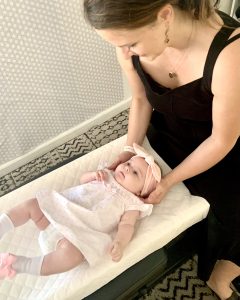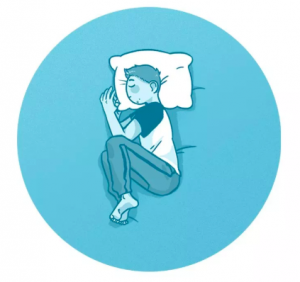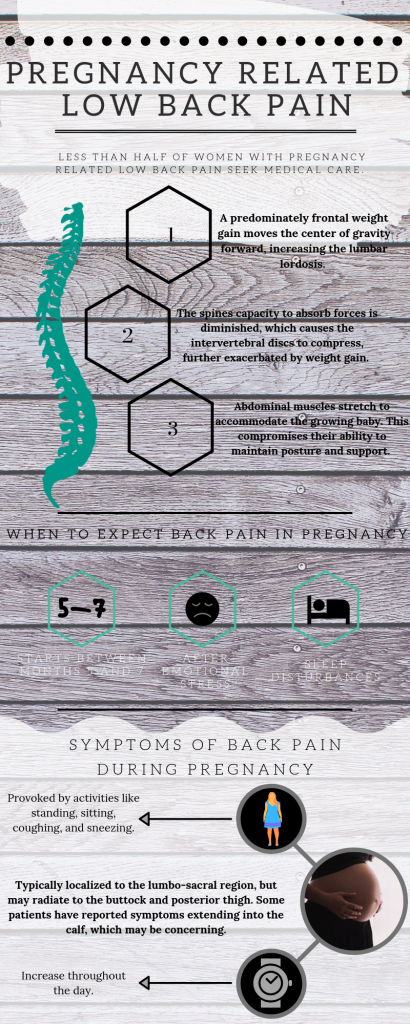
What causes pregnancy related low back pain?
Did you know that less than half of women with pregnancy related low back pain seek medical care? After a predominately frontal weight gain moves their center of gravity forward, the lumbar lordosis becomes increased. The spines capacity to absorb the forces it undergoes in everyday life is then decreased, causing the inter vertebral discs to compress. This is further exacerbated by the weight gain experienced with pregnancy. To accommodate the growing baby, the abdominal muscles will also stretch. This compromises their ability to maintain posture and support the spine.
Pregnant women should expect back pain to occur between month 5 and 7 of pregnancy, after emotional stress, and potentially causing sleep disturbances. Back pain during pregnancy is commonly provoked by activities like standing, sitting, coughing, and sneezing. The pain is typically localizes to the lumbo-sacral region, but some patients report that it may radiate to the buttock and posterior thigh. Others have reported the symptoms extending into the calf, which may be concerning. Symptoms have also been reported to increase throughout the day.
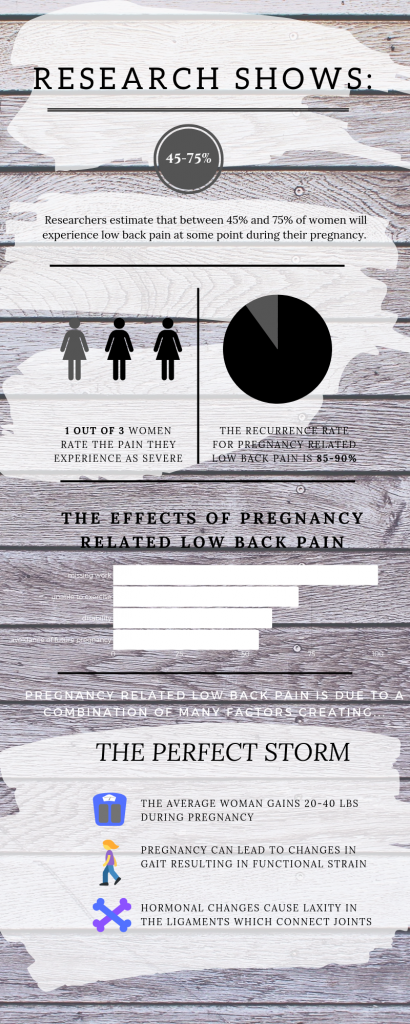
Research about pregnancy related low back pain shows…
Researchers estimate that between 45-75% of women will experience low back pain at some point during their pregnancy. 1 out of 3 women rate their pain as severe. Back pain may recur in as many as 85-90% of patients. Pregnancy related low back pain may affect day to day activities. Patients have reported missing work, inability to exercise, and avoidance of future pregnancy due to the pain.
Pregnancy related low back pain is due to a combination of many factors creating the perfect storm for causing pain. First, the average woman gains about gains 20-40 lbs during pregnancy. Pregnancy can also lead to changes in gait, causing functional strain. Hormonal changes may also play a role by causing laxity in the ligaments which connect joints together.
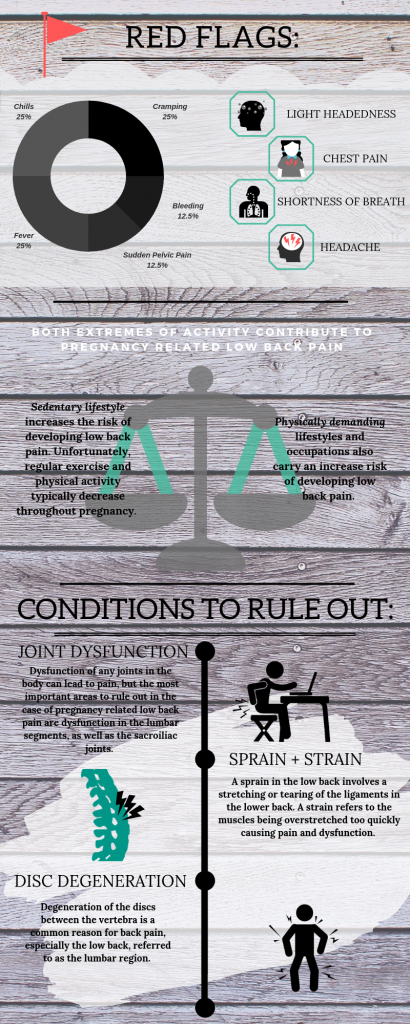
Conditions associated with pregnancy related low back pain
There are some signs and symptoms that should not be ignored if experienced by a pregnant woman. These are referred to as “red flags” and could indicate a more serious problem. Frequent red flags experienced by patients include things like chills, cramping, bleeding, sudden pelvic pain, and fever. More serious red flags include light headedness, chest pain, shortness of breath, and headache.
Activity level also plays a role in pregnancy related low back pain, and research has shows that both extremes of activity affect it. Sedentary lifestyle increases the risk of developing low back pain. Unfortunately regular exercise and physical activity typically decrease throughout pregnancy. Physically demanding lifestyles and occupations also carry an increased risk of developing low back pain.
There are some important conditions to rule out when identifying whether or not you are affected by pregnancy related low back pain. The first is joint dysfunction. Dysfunction of any joints in the body can lead to pain, but the most important areas to rule out in the case of pregnancy related low back pain are dysfunction in the lumbar segments, as well as the sacroiliac joints.
The next condition is a sprain or strain in the lower back. A sprain in the low back involves a stretching or tearing of the ligaments. A strain refers to muscles being overstretched too quickly causing pain and dysfunction. The last important condition to rule out is disc degeneration. Degeneration of the discs between vertebra is a common reason for back pain, especially the low back.
How can chiropractic help pregnancy related low back pain?
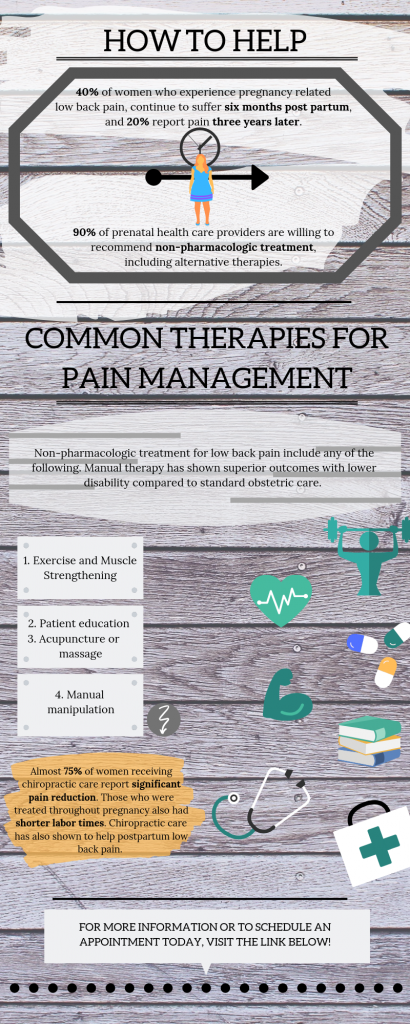
40% of women who experience pregnancy related low back pain, continue to report symptoms up to six months postpartum. 20% of women report experiencing pain 3 years later. 90% of prenatal health care providers are willing to recommend non-pharmacologic treatment, including alternative therapies. Non-pharmacologic treatment for low back pain includes anything that is not a drug. Examples include, exercise and muscle strengthening, patient education, acupuncture or massage therapy. Manual therapy, such as chiropractic manipulation, has shown superior outcomes with lower disability compared to standard obstetric care. Almost 75% of women receiving chiropractic care report significant pain reduction. Those who were treated throughout pregnancy also had shorter labor times. Chiropractic care has also shown to help postpartum low back pain.
SCHEDULE AN APPOINTMENT TODAY
Custom Chiropractor
(408) 248-8700
3700 Thomas Road, Suite 207
Santa Clara, CA 95054
References:
https://www.logan.edu/mm/files/LRC/Senior-Research/1994-Aug-16.pdf



